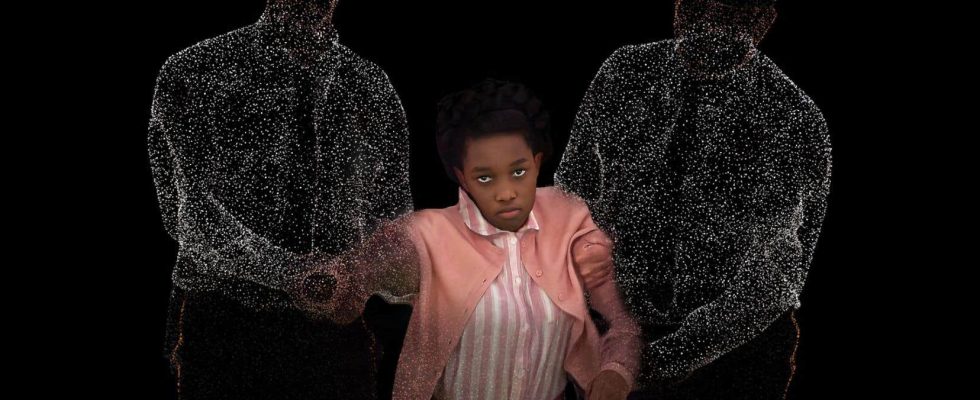When the American abolitionist activist John Rankin learned, in the early 1820s, that his brother Thomas owned slaves, he set out to make him feel the horror of slavery to dissuade him. Throughout a series of letters he addressed to her, letters which would later be published under the title Letters on Slavery, Rankin details the horror, exhibits the violence, brings it closer to the recipient. These letters, he explains, aim to interrupt indifference and, ultimately, the practice of slavery by stimulating a sensitivity through which “we identify with those who suffer, and make their suffering our own.” . Suffering, in other words, would only be intelligible when it is imagined as unacceptable for oneself.
It is to the same operation that the augmented reality experience invites us, some 200 years later. Black, the little-known life of Claudette Colvin, produced by Stéphane Foenkinos and Pierre-Alain Giraud and presented at the Phi Center until April 20. Inspired by the eponymous book signed by Tania de Montaigne in 2015, the forty-minute experience aims to make people feel and sense not the horror of slavery, but that of its segregationist afterlife. Here as in France, the reactions are unanimous: the experience is powerful, striking, essential.
Montgomery, Ala. 1955. A bus. A 15-year-old black girl who refuses to give up her seat to a white person as required by so-called Jim Crow laws. The trial that will follow. Courage, pain, forgetting too. Narrating racial violence and resistance, an invitation to measure its weight, and for this the proposition is that of substitution: thanks to augmented reality, we read in the presentation text, “the history of Claudette can become our story, enter our memories as a “lived” moment of our life and make [chacun et chacune] of us witnesses to this heroic act.”
“From now on, you are black,” we are assured as soon as we enter, wearing helmets. “I was a slave myself,” Rankin assured us in his letters.
Different technologies and mediations, but a similar objective: through representation, to appeal to empathy, namely the fact of projecting oneself into the experience of others to make it intelligible to oneself, to better understand it. understand it, appreciate it. The intention is noble, but the balance thus established is precarious to say the least, not to say dangerous.
First of all, there is the spectacularization of racial violence. Like Rankin’s letters, the Phi Center’s proposal sets the scene. The supportive relationship between violence, pleasure, entertainment and spectacle, even under the auspices of outrage and denunciation, has been widely documented and studied, notably in continental philosophy and in feminist, queer and black studies .
Family picnics to greedily witness the lynchings of African-Americans in the United States at the turn of the 20th centurye century to male violence on the big screen or to prison tourism, from the commercial circulation of the photo of little Aylan washed up on a beach to that of the recording of the murder of George Floyd, whether the intention is racist or anti-racist, the pleasure and entertainment are a function of violence — and spectacle is one of the modalities of their collective exercise, the scale of which is multiplied by late capitalism.
But there’s more here. Fortunately, the Phi Center’s experience does not a priori aim to participate in the reproduction of violence, but rather to put an end to it by summoning empathy, empathic identification. More precisely, it is a question of mobilizing augmented reality to channel the viewer’s sensitivity towards the fight for social justice.
The bet, however, precedes the question: can we show solidarity with others by occupying their position?
As Saidiya Hartman, professor at Columbia University, teaches us, representing violence as something unacceptable to oneself obliterates the other. Indifference towards suffering is perhaps lifted, but only to the extent that it would be inflicted on us. Beyond good intentions, does not the suffering of the other, asks Hartman, become even more inconceivable? Doesn’t the other become even more of a distant, abstract, discredited object, since suffering only appears unacceptable when its fantasized subject becomes the (white) me and we?
The spectacle of a violent self, for the same spectator self, distances us from the suffering of others, which only becomes the vehicle of our own feelings. Despite the denunciatory intention, the empathetic spectacle of violence entertains as much as it distances us from the suffering of the other whose place we have taken: it distances us from the end of this suffering as much as it evacuates the spectator’s position in what creates it and maintains it.
Now you are black, enjoy it.
